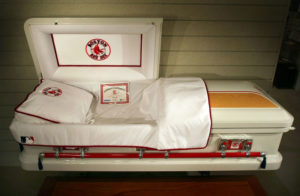When brands collide, it could result in Reese’s Peanut Butter Cups. However, it could easily end up being the next Boston Red Sox coffin.

Undoubtedly, the Internet at large has at least heard, if not contributed to, the conversation about the appropriateness (or lack thereof) of the November GQ cover. You know the one. It features the actors of high school characters from the show Glee clad in underwear provided by Victoria’s Secret.
The main argument that sent the Internet buzzing a couple weeks ago was the message that the actors of a popular show are sending to kids. As an art director, however, the message that I prefer to examine is that of branding. To me, this cover stands out as a great example of a clash between personal brands and company brands.
Actors, like designers, have a notable personal brand as a result of their work. Unlike designers (most of us, anyway), actors’ personal brands are also made up of charitable donations, PR stunts and often, personal lives (or at least the portions snapped by the paparazzi and published in rag mags or posted online).
Because we have personal brands that we use to propel our own careers, we also need to make sure that those brands coincide with the companies and projects we associate ourselves with. Be us part of an agency team or independent freelancers, our brands (including bodies of work) are what attract new and repeat business. It’s important that we’re accurately portraying ourselves as we want to be seen.
For example, if a designer works at a relatively conservative design firm notable for branding banks and insurance companies, taking on a high-profile adult entertainment project – even as a freelance designer – could be damaging to the brand of the agency. Even if it simultaneously brings the designer increased exposure. The audiences don’t mix. The same designer could see himself removed from the conservative projects at the agency, and propelled into a much different career. Alternatively, the agency’s existing clients could question their relationship with the agency altogether.
The same can be applied the Glee GQ cover. The audience of the show tunes in to watch a story about talented but average high schoolers deal with both adolescence and perfecting their performance every week for glee club competitions. The audience of GQ, given the extreme deviation in messaging both in the subheadings and photography on the cover, likely do not and would not tune in for the same story.
The mere fact that there is such buzz over the cover illustrates that it is an unexpected means of promoting the popular show. While it may work as a stunt to gain immediate exposure to a new audience, unless the brand of the entire show shifted to coincide with the message this new audience will not be won over. They may have a piqued interest in other projects the actors become involved in, but not in the show itself.
And if such a dramatic shift in branding and content were to happen, it would be at the cost of the existing audience.
It’s important to know your company brand, and make sure your work and actions under that heading coincide with the messaging. It is possible to have pieces of your personal brand stay separate from your corporate brand (after all, we don’t necessarily do the same tone of work at every job we have throughout our entire lives), just remember to flaunt them in ways that won’t link to your company brand in an off-messaging way. In the case of the Glee GQ cover, the messaging misses the mark. And the reaction is anything but favorable when the image is headlined under the brand of the show.
